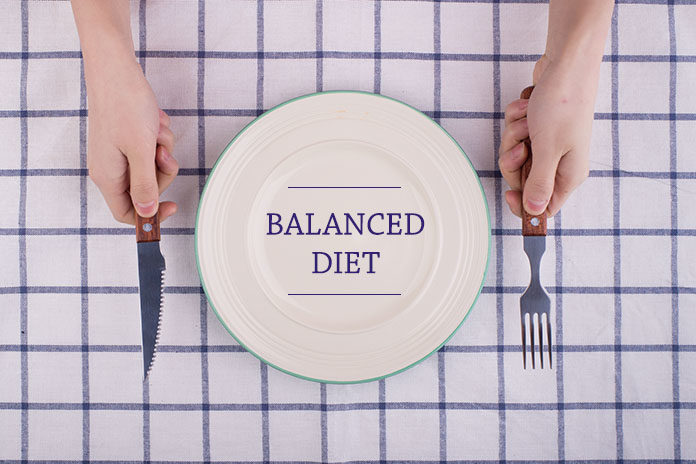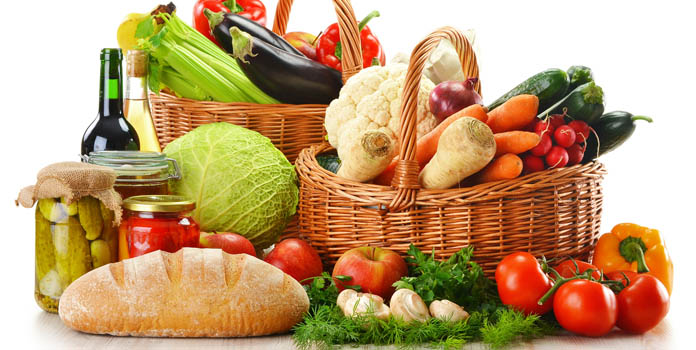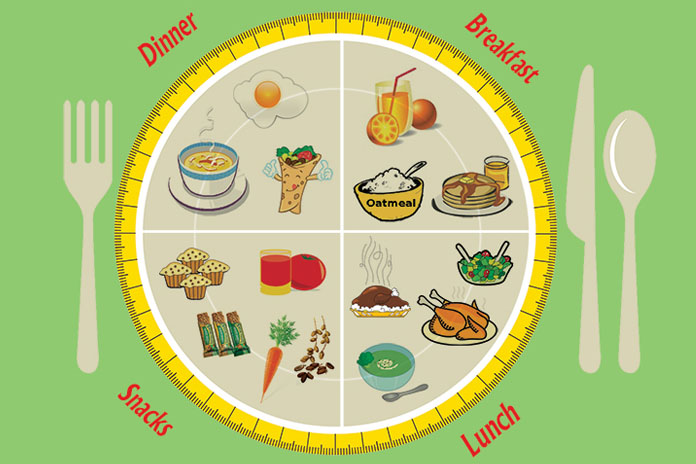
Balanced Diet – You will find much advice, not necessarily right, around the internet about a balanced diet. The word is extensively used by ordinary people and health professionals alike. However, despite this plethora of information, most people struggle to get healthy.
The more you look for information, the more is a chance of getting confused about actual meaning or definition of a balanced diet.
Also Read: Eating Spicy Food a Secret to a Longer Life?
So, there is a need of the correct explanation of a balanced diet as well as how nutrients from a balanced diet help in maintaining our health. So let’s begin with first understanding what is a balanced diet and importance of a balanced diet.
What is a Balanced Diet and Why is it Important?
We need energy for everything we do in our life. In fact, our bodies are always working round the clock even when we are sleeping. Many automatic processes are happening in your body without our awareness- repair of tissues, manufacturing of new cells, pumping of blood, fighting viruses and bacteria, maintenance of body temperature.
Moreover, all these functions require a lot of energy or one could say different types of energy which we get from nutrients in food.
Definition of a balanced diet: A balanced diet refers to a diet which has a proper balance of all nutrients required by our bodies to perform at an optimal level.
These nutrients are broadly classified into two categories- Macronutrients and Micronutrients.
Macronutrients comprise of three main nutrients namely carbohydrates, fats, and proteins. These nutrients are responsible for high, critical functions of the body. For example, carbohydrates are the primary source of energy.
Similarly, proteins are responsible for repairing muscles and tissues whereas fats are energy reserves that help us in meeting energy needs at the time of emergency.
Micronutrients, on the other hand, encompass vitamins and minerals. They are equally important as macronutrients as they help in performing other critical functions. They help other parts to convert food into energy, boost our immune system, aid in the healing of wounds, strengthen bones and much more.
The deficiency of any one of these nutrients can throw your body off-balance giving rise to various health concerns. A healthy diet which contains an appropriate mixture of all these nutrients will ensure that your body is getting necessary fuel to run efficiently.
Related Articles:
- The Best Weight Loss Diet Ever
- Fast Weight Loss Diet For Better Results
- Top 8 Heart Healthy Diets
- Best Healthy Diet Plan for Men
- How to Prepare Healthy Diet for Teens
- Female Bodybuilding Diet
Five Main Components of a Balanced Diet
 According to official health standards and various health organizations, we can get all above nutrients from five broad categories of food. These foods constitute an ideal balanced diet for an individual:
According to official health standards and various health organizations, we can get all above nutrients from five broad categories of food. These foods constitute an ideal balanced diet for an individual:
1. Grains and Cereals – Grains and cereals like whole wheat, barley, muesli are primary sources of carbohydrates. Carbohydrates fulfill almost 70% of the energy needs of our body, so it is vital to eat sufficient quantity of carbs. You should aim to eat a major portion of carbohydrates in the morning to gain enough energy during the day.
IMPORTANT FACT: All carbohydrates are not same. White rice or sugar is also a source of carbohydrates and so is brown bread. The difference lies in how quickly they get converted into starch in our body (glycemic index of food).
Simple carbohydrates like white bread, pasta, sugary snacks, fruit juice are almost instantly converted to starch causing a sharp spike in blood sugar levels (high GI). Complex carbohydrates slowly release energy and are much better option than simple ones (low GI).
2. Fruits – Fresh seasonal fruits not only curb your hunger pangs but are also loaded with vitamins and minerals. You should try to get about one-third of your daily intake of calories from fruits. Remember, however, that you should eat your fruit and not rely on fruit juice because nutritious fibers in fruits are destroyed during juicing.
Also Read: 37 Benefits of Aloe Vera Juice.
3. Vegetables – Dark leafy vegetables are your best bet to get fit and healthy. You can have them with every meal as they are low in calories but loaded with vitamins and minerals. There are plenty of options for vegetables from which you can choose such as ladyfinger, spinach, broccoli, kale, green beans, etc.
Cooking Lunch: Try These Ideas For Kids.
You can also enjoy these vegetables in the form of smoothies in the morning or in the evening as a snack.
4. Dairy – Dairy includes milk and related products such as yogurt, cheese, and butter. They contain calcium, protein, vitamin D and other minerals which are beneficial to bones in your body. However, they also have significant portions of fat so you should limit their consumption or use their low-fat varieties.
If you do not like dairy, you can try alternatives like almond milk, soy milk, flax seed milk. They contain necessary amounts of calcium and are usually unsweetened.
5. Protein foods – Protein is quite abundant in non-vegetarian diet comprising of meat, fish, and poultry items. These items are also high in fat so go for their lean varieties. However, that does not mean vegetarians need to be deprived of this essential macronutrient although that is usually the case.
You can also get your daily dosage of protein from beans, legumes, milk, tofu, lentils, peas, nuts and seeds.
Important Tips to Make A Balanced Diet Chart
 Now that you know the importance of a balanced diet and what foods come under it, you can easily make your balanced diet chart. Keep in mind that one healthy diet chart cannot work for everyone.
Now that you know the importance of a balanced diet and what foods come under it, you can easily make your balanced diet chart. Keep in mind that one healthy diet chart cannot work for everyone.
You need to take care of your specific requirements depending on your gender, age, type of daily work, amount of physical activity, etc. Having said that, there are some tips which you can keep in mind while making your diet chart:
1. Never miss a breakfast and aim to have a major portion of carbohydrates during breakfast and lunch. This is when the body needs the maximum amount of energy and carbs are necessary to fulfill that requirement.
2. Eat something within an hour or maximum hour and a half of waking up to kick start your metabolism. You can have a fruit or a bowl of oatmeal early in the morning.
3. Have a delicious sprout in the morning breakfast followed by pulses in lunch and nuts and seeds in the evening to fulfill your daily protein requirement.
4. Avoid refined carbohydrates as much as possible. These include white sugar, pasta, rice, white bread, pastries, sugary snacks, ice-creams. The energy obtained is only for a small period, and you will feel more hungry after some time.
5. Include complex carbohydrates such as oatmeal, brown bread, etc. They are digested slowly in the system and provide energy for longer periods of time.
6. Instead of munching on processed snacks, you can eat nuts and seeds like sunflower seeds, flax seeds in the evening with simple yogurt. These contain essential fats and vitamins which are crucial for a balanced diet. However, do not take them in excess as they are high in calories.
7. Aim to have fruits alone, in between the main meals, such as breakfast and lunch or as evening snack before dinner. Never eat a fruit immediately before or after a major meal. This is because digestive enzymes needed to process a fruit are different from those for dense foods. So, the fruit is not properly digested and remains in stomach leading to fermentation or rotting.
Once you understand the basic elements of a balanced diet, it is very easy to incorporate it into your daily life. Share with us your own healthy diet chart which has improved your health.
Also Read : 15 Healthy Eating Rules You Can Follow Easily
